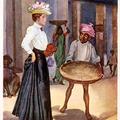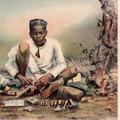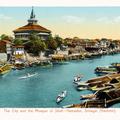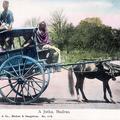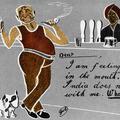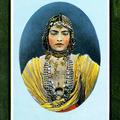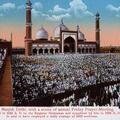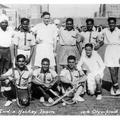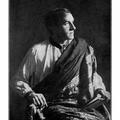Coolie with his Basket
A postcard by the great Indian painter M.V. Dhurandhar illustrating an Englishwoman looking over a coolie offering his services with an empty basket. Note the cleverly positioned Indian woman with a basket on her head in the background.
The message

